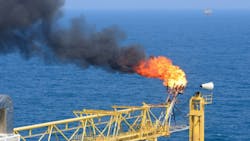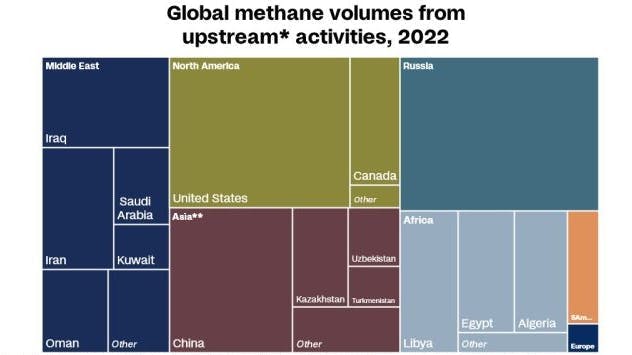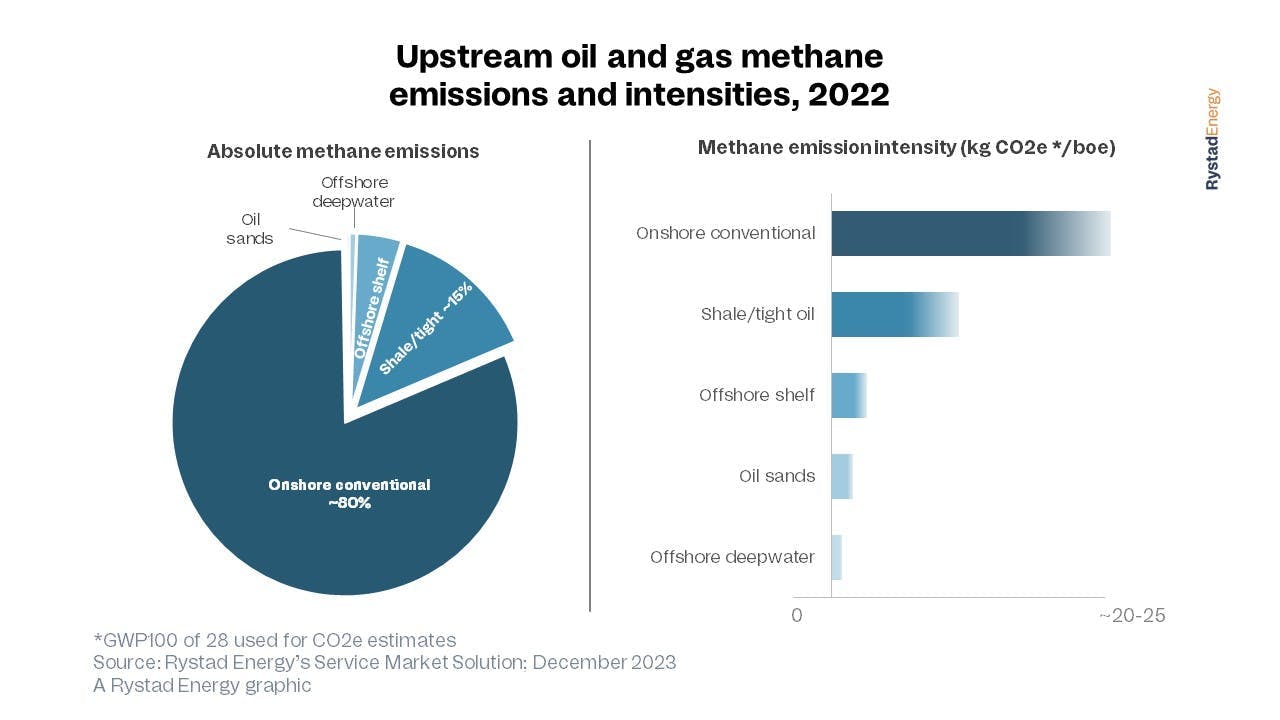Report identifies main areas and causes of methane emissions
Offshore staff
OSLO, Norway — A recent study by Rystad Energy, employing satellite detection and data analysis on upstream oil and gas methane (CH4) emissions, found that more than 100 oil and gas fields located mainly in the Middle East, Africa and Asia emitted large amounts of methane.
Recent developments in measurement technologies, such as satellite imagery, suggest methane emissions could be much higher than previously thought, the consultant claims, adding that venting and leakages of methane are also a waste of resources that could mostly be avoided.
Rystad assesses that more than half of global upstream oil and gas methane emissions arise from large venting and leakage events, with the remainder from flaring, fugitive emissions from equipment and smaller venting incidents.
South America and Europe appear to have relatively moderate methane emissions compared to other upstream oil and gas producing regions. But Europe’s heavy reliance on imported oil and gas, which comprises about 80% of its consumption, results in a substantial methane footprint.
Under EU regulations, starting January 2027, new contracts for imported oil, gas and coal may only be concluded if exporters comply with the same monitoring, reporting and verification obligations as EU producers. These regulations will also set methane thresholds to determine the acceptability of hydrocarbon imports into the EU.
Magnus Kjemphol Lohne, senior vice president of global emissions research at Rystad, said, “Scarce and low-quality methane data is one of the key challenges to curb methane emissions. The trend over the past couple of years has been positive as more operators deploy onsite methane monitoring equipment and use other measurement technologies such as aviation and satellites—but even so, most reported data is still based on simple emission factors for facilities and equipment located on site. Addressing the critical hurdle of limited and unreliable methane data is vital in unlocking progress for reducing methane to near zero in the short and medium term.”
01.11.2024


